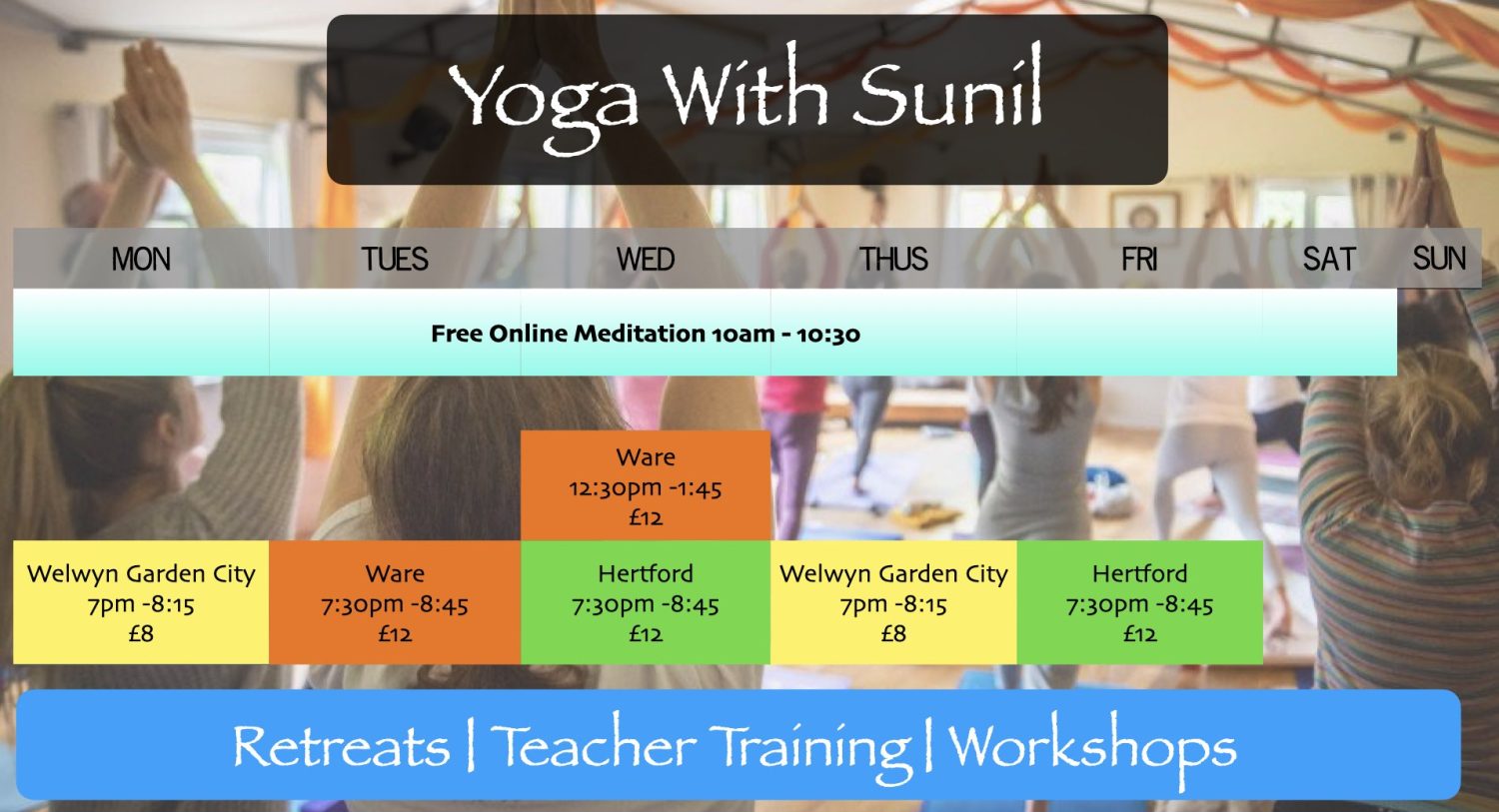How is Yoga different from exercise?
A Teacher of Yoga Or A Teacher of Exercise
Yoga is such an open book that it could almost be anything to anyone. To someone that practices at a gym perhaps the atmosphere and setting encourage pushing oneself as you would during exercise. At my Hertford Yoga classes getting exercised is a byproduct of the process. So; what happens during a Yoga class and how is the experience different from going to the gym?
Intention setting
By calling on our highest self we ennoble our activity. With this inward step as well as looking upon the Self with kindness / gentleness / love we take a departure from a mechanical use of the body to ‘exhaust it’.
With the help of centring practices such as conscious breathing or meditation we are reminded that the focus is to observe and not get involved in the restless activity of the mind (Manas). The emphasis is to recognise our need to judge (ourself / others) as it occurs. What makes yoga different from, say body building, is that we must arrive at our practice as an exploration of Self. Not that we are seeking perfection outwardly, in body or in holding a (seemingly) perfect asana (posture). When done with deep awareness weight lifting can also be Yoga (!).
When we start noticing the flow of thoughts and realise that if we can hold our need to dive into each sensation or thought there occurs a space…. It is this space of no thought that we are exploring during a Yoga class.
Awareness training: Suspension of the incessant flow of thoughts / Delaying judgement
Yoga shows us that we are able to generate energy, that this energy can be collected and then channelled.
By being centred on the breath, following it via nostrils, but also as it passes through our body and then breathing into a particular part of our body we are able to heighten our sensitivity of this flow of Prana (energy). Then as we hold ourself in regard and simultaneously turn our awareness inward – instead of thoughts that lead us outward – we arrive at the doorstep of the integrated flow experience or Yoga. 
Movement between Asana and seated meditation
As we encounter greater balance within; meditation becomes a natural experience. Occupying the mind with Asana helps to keep the Ahamkara (ego) in check, then when we are seated we can deepen this distance between Buddhi (superior intellect) and Ahamkara.
Consciously moving away from goal setting / increasing present moment awareness
A clear difference between Yoga and exercise is that there is no goal setting. If there is any goal it is to mould ones self into someone that s/he can live with. The idea is not to explore our ego, it is to see it for what it is and then move into the gap that is left as we draw our attention to something deeper.
To work toward a felt experience of greater peace within. I teach this by stringing together a series of classes that seek to increase our sense of peace, but that also develop the students ability to hold an asana in greater poise. To get the students to demonstrate to themselves that they can oscillate between activity and poise on the mat and that this can be carried through into everyday activity is the core of what I teach.
And so, in a way there is no such thing as ‘advanced Yoga’, we only move into deeper awareness. This can be achieved by a child practising Yoga for the first time or by a ‘Master’ with over 50 years experience. Time is not a factor, bodily strength is not a factor – the only thing that is of concern is the depth to which the practitioner is able to explore their inner space.
If this has got you curious or you’d like to find out more please contact me or leave a comment below and lets talk Yoga!


Thanks for the explanation Sunil, it is very helpful. It feels good to take the pressure off ‘ achieving ‘ in favour of conscious awareness of what is.
Hi there, thank you for sharing your thoughts 🙂